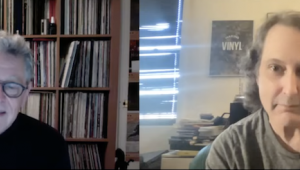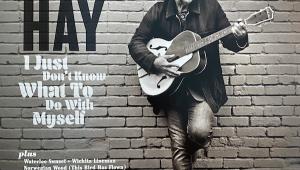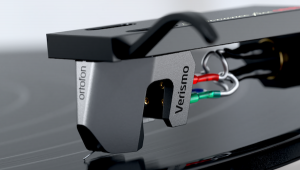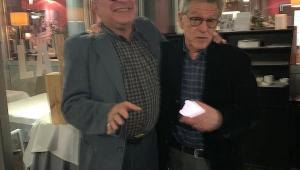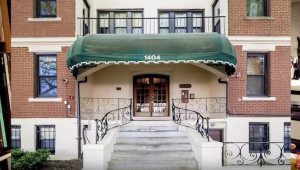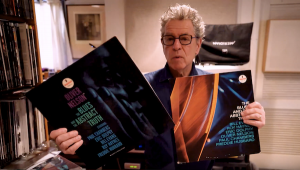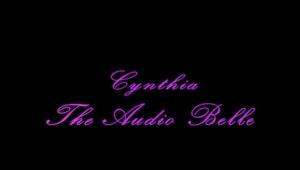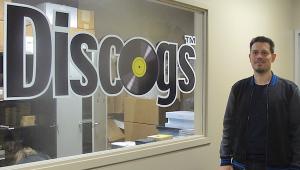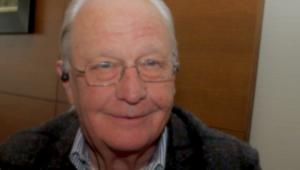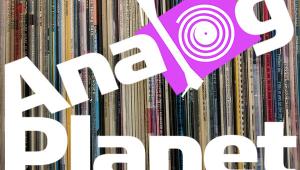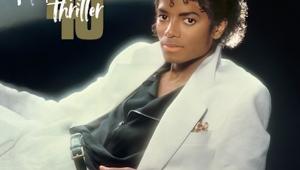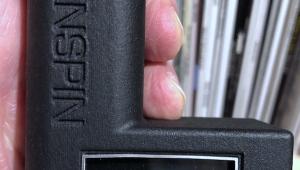Alex Lifeson on the Ever-Adventurous Aural Rewards That Await by Listening to Envy of None, Victor, and That Little Ol’ Canadian Trio Known as Rush on Vinyl
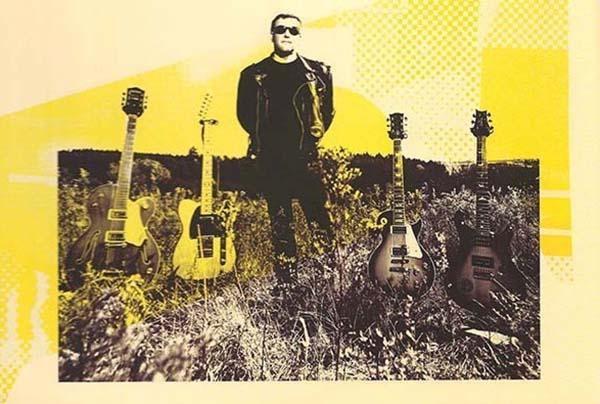
Progressive thinking, thy name is Alex Lifeson. The once and forever Rush guitarist recently found new creative life within his current four-person band Envy of None, and he couldn’t be happier.
“I have to admit, I’m quite surprised that, at 71, I’m still getting lots of ideas — lots of different ideas — and I want to approach things differently,” Lifeson told me earlier this month in a wide-ranging, exclusive interview covering Envy of None’s sophomore LP, the legacy of Rush, and his mid-1990s solo album, which was then both called and credited to Victor. “I’m still discovering things about my own playing and the limitations I have as I get a little older, but I’m also expanding in so many other areas,” Lifeson continued. “I feel really good, and my health is really good too. Right now, you’re seeing me in my studio apartment, and I have everything here — take a look.”
Lifeson then panned his laptop’s camera around the studio, where I saw a wall behind him lined with two rows of fabulous guitars as far as the eye could see, along with a stack of other cool gear off to his left that included a seafoam green Matchless amp and at least two racks of recording/mixing equipment. When I told him that I just loved seeing all that gear looking like it was ready to be put to good use, Lifeson smiled and said, “I love it too. It’s just a world of exploration right now — and it’s really, really great. It keeps me engaged, and on my toes.”
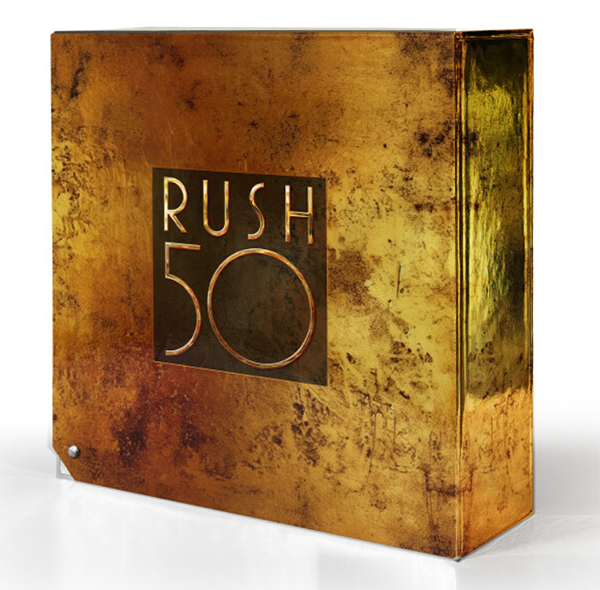
For almost a half-century prior to Envy of None’s 2021 inception, Lifeson kept his head, heart, hands, fingers, and toes fully engaged as the ever-inventive lead guitarist and onstage foil for bassist/vocalist/keyboardist Geddy Lee and the late, great drummer/lyricist Neil Peart in Rush. Just last week, in fact, on March 21, 2025, Rush celebrated their golden anniversary with Rush 50, a lively, 180g 7LP box set from Anthem/Mercury/UMe that spans their entire career — and it includes a number of unreleased gems to boot. (You can read my February 6, 2025, AP post about the contents of this box set here.)
In a separate story about Rush 50 that will soon appear on our sister site Stereophile, Lifeson and I went into much great detail about the song choices and the sounds therein, including his and Geddy Lee’s modern-day reactions to their playing style in the ’70s and how it ultimately evolved over the years. More of the guitarist’s comments about his time in Rush will appear in the full-on Q&A that follows below, but Lifeson made another important point about the Rush 50 box set that he wanted to share with us here as well. “Really, it’s about the listener. It’s about Rush fans,” he observed. “The label can do whatever they want, but they’re respectful enough to ask our opinion, and make sure we’re fine with everything. I know it’s a pricey package, but there’s a lot in it, and it’s totally worth it. It’s all really, really well put together, and it’s beautiful — especially Hugh Syme’s new artwork. I think they did a great job. There’s a lot of stuff in there.” (Find out for yourself, as you can order the 7LP Rush 50 box set here from Music Direct, where it has an SRP of $249.99.)

That all said, the main task at hand here today is to discuss Lifeson’ above-noted current band, Envy of None (a.k.a. EON), who just released their second LP, Stij(ē)ən Wāvs, yesterday, March 28, 2025, on Kscope, in a variety of color vinyl options (blue, pink, and black). Those expecting Rush Mach 2 will not find it here — but those with open ears and open minds will be more than well-rewarded. Following the adventurous sonic template EON forged on their self-titled April 2022 Kscope debut, Stij(ē)ən Wāvs (it’s pronounced, “Stygian Waves”) ups the ante by putting their own spin on inventive production soundscapes that would make Butch Vig and Garbage proud, along with deeply affecting ethereal vocals a la Lush. From the middle Eastern underpinnings of “Under the Stars” to the relentless ebb and flow of “Raindrops” to the otherworldly nether-reaches of the title track, Wāvs crests anew in its own cosmic wake.
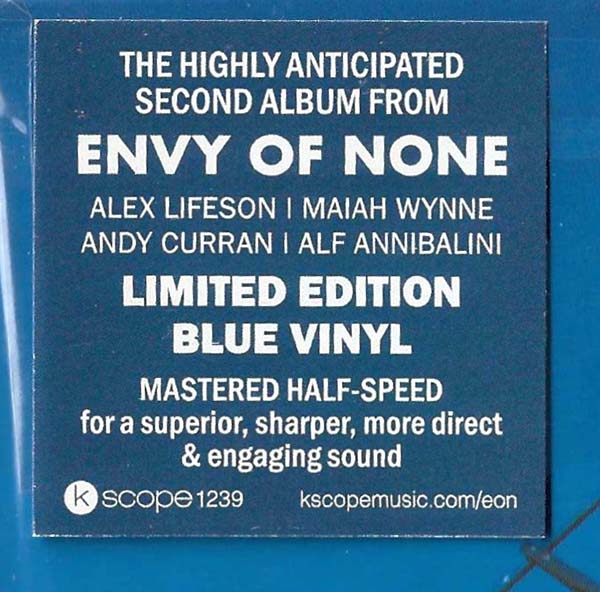
The Stij(ē)ən Wāvs lacquers were half-speed-mastered (“for a superior, sharper, more direct & engaging sound” as per the hype sticker, as seen above) and cut from 24-bit/96kHz digital files by John Webber at AIR Studios, London. The vinyl was pressed at TAKT Sp. z o.o. in Poland, and I rate the Music at 9.5, and the Sound at 9. Digital pooh-pooh’ers should, frankly, just get over it, and actually listen to this LP. Kudos to Lifeson, lead vocalist Maiah Wynne, and multi-instrumentalists Alf Annibalini and Andy Curran for mindmelding the EON sound together here so earworm-infectiously.
With EON clearly entrenched, a third album seems like a foregone conclusion. “We had the Stij(ē)ən Wāvs playback in Toronto the other night,” Lifeson recounts. “We were sitting in the green room together and Maiah said, ‘You know, I miss working on a record together.’ And we all kind of laughed and said, ‘Okay, well, this album comes out on the 28th of March, right? Let’s start working on a new record on the 29th.’ So, we’re very excited about moving forward on the next one.” Seeing how the 29th exactly coincides with the date of this post, I expect nothing but good new EON-related audio adventures are already getting underway north of the border.
During our recent Zoom interview via his Toronto studio locale, Lifeson, 71 (as he cited above!), and I discussed how he remastered Victor specifically for vinyl, his album-sequencing philosophy for Stij(ē)ən Wāvs, what the first LP and first 45 he ever bought were, and what he hopes Rush’s enduring legacy will be. It’s not too late to change / In the end it’s what you leave behind. . .
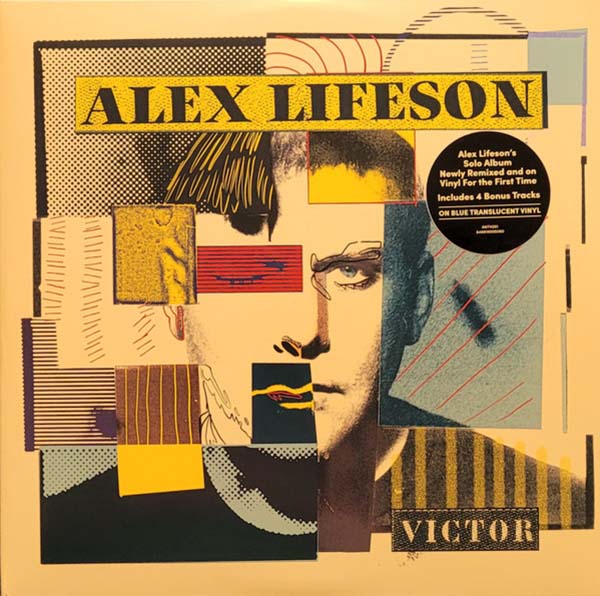
Mike Mettler: Before we get deeper into EON and Stij(ē)ən Wāvs, I have to say I’m so happy that you reissued Victor on double vinyl. I know that Victor was a passion project for you, and I think it sounds so good on two LPs instead of you trying to cram it onto one. That had to be important to you.
Alex Lifeson: Yes, for sure. You know, I was never really happy with the mix on that album — and I remember it was a grueling time. I was on my own and all that stuff, and I was never really happy with the bottom end. Anyways, having just a second crack at it was really important to me. When I mixed it the second time, I also discovered that I’d really layered a lot of guitars. Some songs had six layers of guitar.
Mettler: Yeah, some of those songs were really, really dense.
Lifeson: Sure! And that’s what I wanted to accomplish at the time. But when I got everything in front of me here when I was mixing Victor for vinyl, I thought, “My God — this is just too much. I can’t really hear the definition of what the guitar part is actually about.” So, I pulled out so much stuff. For a lot of the songs, I just left it as two guitars, like a double, or in some cases, just a single guitar — and that created so much more space and air. And then, having the chance to get that bottom end right — it was really just such a treat for me to get a second chance at it.

Mettler: Yeah — and I love that it’s got multiple color vinyl options. I have the translucent blue version here, as you can see. The whole aura and atmosphere on the “Victor” title track [LP2, Side 3, Track 2] is much wider, and you just kind of feel the storyline even deeper, and where things are placed in the soundfield is great too. I also like getting Side 4 [a.k.a. Side >!] with the four bonus instrumental pieces on there. And I also have to say, finally being able to hear “Shut Up Shuttin’ Up” [LP1, Side 2, Track 3] on vinyl is just — I mean, come on now, that’s just too good.
Lifeson: (laughs heartily) Yeah, exactly!
[MM semi-briefly adds: Victor was originally released on CD by Anthem/Atlantic in 1996, and it was both reissued and expanded on double vinyl in 2024 on Anthem/Atlantic/Rhino. The new 2LP version of Victor was remastered by Harry Hess at HBomb Mastering, the lacquers were cut by Sean Magee at Abbey Road Studios, London, and all versions and variations — crystal clear, blue translucent, ruby red, and black vinyl — were pressed at Precision in the Czech Republic. My ratings: the Music is a 10, the Sound is a 9, and you can order it from Music Direct here. The SRP for Victor is typically $39.99, but at the time of this posting, it’s currently going for just $24.99. Get it now before that bargain SRP changes, I say!]

Mettler: Last thing before moving on from Victor. I have one very important question about “Shut Up Shuttin’ Up,” and that is — does Charlene get points for it, now that it’s on vinyl?
Lifeson: (more laughter) Well, we are just celebrating our 50th anniversary. [Charlene, Alex’s wife, along with her friend Esther, add what one could rightly call “catty commentary” vocals on that track.]
Mettler: Oh, wow! Fantastic. Congratulations.
Lifeson: “Feels more like a hundred” — that’s what she says! (laughter continues)
Mettler: Well, I’m glad we can now drop the needle on those “Shut up!” and “Maaaan!” retorts of yours and the blistering guitar solo that follows all that stuff. Who listened to the test pressings?
Lifeson: Andy Curran, who also works at Anthem — he listened to the test pressings for me, and he said they were great. Same thing with Envy of None — he gets them first, and he checks them for us. (slight pause) You know, I’m going to have to get a new turntable in my studio here, which is where I do all my listening. Vinyl is so great, and new vinyl is even better.
Mettler: Well, you know I already agree with that. I mean, what’s that four-letter-word band celebrating a 50th anniversary right now? (Lifeson smiles) Considering how some of those ’70s pressings were, I think a lot of the Rush catalog reissues sound much better now.
Lifeson: Yeah. They do. And like you and I just talked about [for the aforementioned Stereophile story], I think Rush 50 is a great way to mark all of those changes we went through as a band over all those years. You can hear all that development.
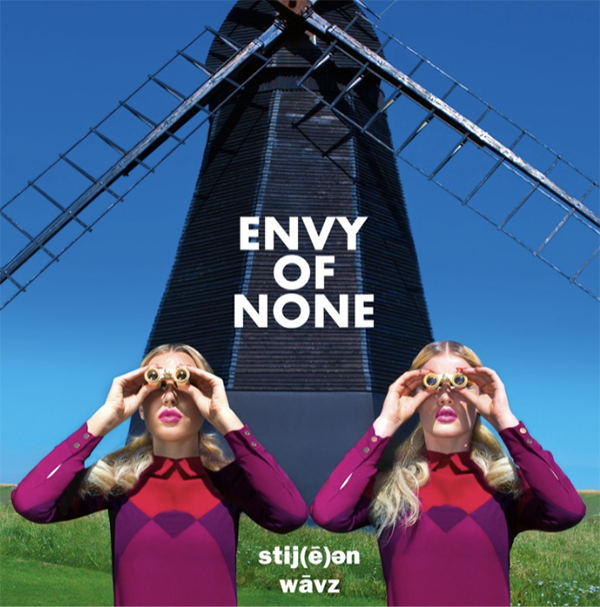
Mettler: Yeah, and I think that’s also a perfect way to describe what you and Envy of None are doing here on Stij(ē)ən Wāvs, which is your second record. The first record [April 2022’s Envy of None, also on Kscope] was fantastic as well, but I feel like there’s an evolution that you can tell on this album. To me, Side A feels a little bit different than Side B, and I don’t know if that’s deliberate — but it probably is. In terms of your sequencing choices, did you guys discuss like, “Okay, this is a Side A song, and this is a Side B song.” Was it that clinical, in a sense?
Lifeson: No, it wasn’t that clinical. In fact, I took the reins there, as the songs were coming together. Very early on, I try to get a sense of what the best sequencing is. So, I would put together a sequence as the songs were being finalized, but it wasn’t until they were all in [hand] that I started really moving things around. I tried different combinations, and got the sequence that I thought was the best sequence — and again, you’re thinking about dynamics, songs that are rockier than others, or if I have two funky songs in a row. I tried to put together a list that really was well-balanced — and everybody else was happy with that list. And that is the list, the sequence, that you have.

Mettler: I always like to honor listening to the sequence that an artist gives me, because that’s the story you’re trying to tell me. (Lifeson nods) I mean, “Not Dead Yet” [Track 1] is the perfect album opener to me. I know there’s that, well, we’ll call it the James Bond-ish thing going on there, which is a cool thing to hear. . .
Lifeson: Oh, absolutely! (chuckles)
Mettler: Is it fair to say that, in “Thrill of the Chase” [Side A, Track 4], there’s a sneak-in of a “Day Tripper” meets Prince thing at the end?
Lifeson: Yeah! Yeah. And that’s kind of a cool song, because it starts off very funky, but then it goes through a little dreamy, harmonic thing — and then the mandolins come in, in another section, and then it funks out at the end. When I was working on the guitar parts for that song, I was thinking about, “What can I write in this section for a guitar presence?” I just heard that riff — (hums its Beatlesque notes/chords). It’s a variation of it — but it seemed to fit in there, and it makes you smile when you hear it, you go, “What is that? Is that a bit of ‘Day Tripper’ there?”
And actually, Andy’s bass part in the section where I play that — it’s a copy of the bass part from the verses of “Satisfaction,” by The Rolling Stones. When he heard what I did, he thought, “Okay, I’m gonna pull something from the ’60s as well!” (chuckles)
Mettler: Ah, that’s so good. We can call it Feedback, Part II, or something to that effect. (Lifeson laughs) [Feedback is a 2004 Rush EP on Anthem that features covers of eight songs best known from their popular ’60s incarnations that served as “inspirations” for the band.]
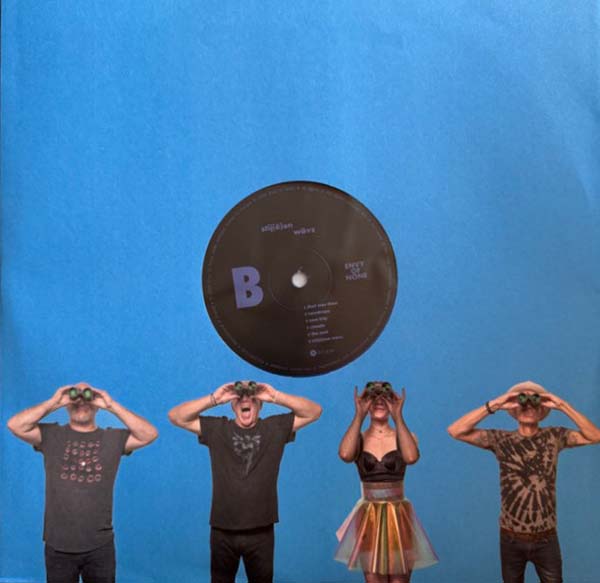
Mettler: Flipping over to Side B, “New Trip” [Track 3] has this great, I wanna call it — I know some people might say it’s like “shoegazing,” but I’m gonna call it “stargazing,” because it’s got that kind of Lush, ’90s-ish vibe to it, but it also sounds futuristic. I bet you felt like, “Wow, this is a new sound for us.”
Lifeson: Absolutely. I’m glad you picked that one, because that song was the most difficult song for us to mix. Alf [Annibalini, one of EON’s other guitarists and the album’s engineer] really struggled with it. The song is such a positive song. It’s about a journey, and the quality of the parts — I mean, it’s soft, it’s gentle, it’s sunny, it’s warm, and it’s embracing. It’s all really warm, positive things. That’s how we wrote it, and that’s how it needed the sound — and that’s why there was such a struggle.
Plus, Maiah [Wynne, EON’s lead vocalist], I think, is genius on that particular song. She was great on the whole record — but that one, she hit it out of the park. There’s something about her delivery that just makes you feel so warm and soft, and satisfied — and content, I guess, is a better word. That song is really, really special, and it’s probably my favorite song on the record. And then it goes into this whole acoustic thing in the middle. It’s just such a beautiful song.
Mettler: Yeah. Yeah. And I think we all feel like Maiah’s vocals have progressed, even just over these last couple of records. I’ve got her 2024 solo CD Out of the Dark sitting beside me as well, and. . .
Lifeson: This one? (holds up his copy of Out of the Dark)
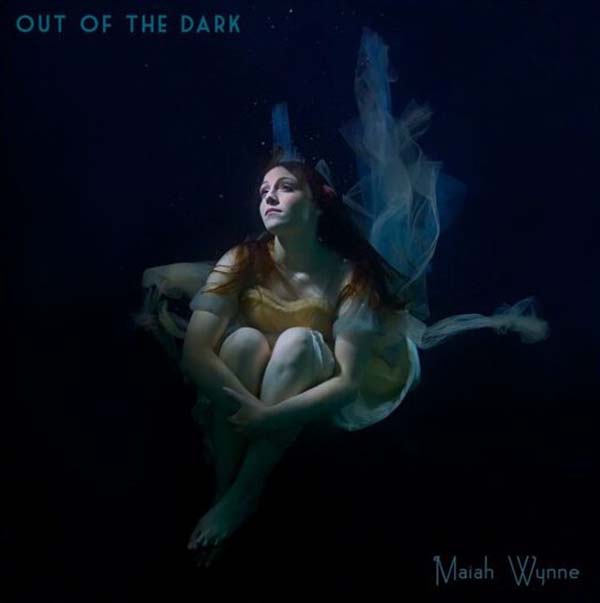
Mettler: Ah, yes — I see you, and I raise you! (MM holds up his Out of the Dark CD; both laugh) It’s so good, right? I hope she gets this one out on vinyl someday, because I’d love to drop the needle on it.
Lifeson: Yeah, me too. [Lifeson plays on five tracks on Dark. You can order Wynne’s self-released CD for $20 from VisionMerch here.]
Mettler: Before we get into the sound of the title track, can you tell me the thought process behind spelling out the album title as “Stij(ē)ən Wāvs”?
Lifeson: Okay. So, when we decided on that title for the record, I saw it written phonetically — that spelling, with the J and the Zed on the end, or Z, as you say, at the end. And then when we submitted it to the record company [Kscope], they were like, “Oh my God, what are we gonna do with this? Where are we gonna get this typeset?” They were panicking! That’s why there’s two spellings — there’s the phonetic spelling on the album, and then there’s the more easy-to-use spelling [i.e., “Stygian Waves”] (chuckles) for promotion and publicity, and all of that stuff.
Mettler: Permanently Zed, we’ll call it, so to speak, to sort of borrow another title or two. (more laughter) To get back to the title track [Side B, Track 6] — I feel like there’s no other song that can end the record in my mind after listening to it in order a number of times. And Maiah’s wordless, “ahh ooh-ooh” vocals on it are just so evocative, without needing words to get the feeling across.
Lifeson: Yeah. “Stij(ē)ən Wāvs” was kind of interesting because it was the last song we worked on. It had a working title of “Wham Bam,” and my first impression was, “This is kind of a dance-y, EDM sort of thing. What can we do with that?” I was not locked into it quite yet. When Maiah heard it, we talked about maybe doing an instrumental. She said, “Well, if we do an instrumental, that’s great — but I wanna do vocalizations. I wanna let go.” She had just come back from a trip to Northern India and it had a big impact on her, so it added that little bit of Eastern flavor to it. I play oud in the middle section, for example. It has a lot of those rhythmic patterns, and it just has so much energy. That song, and her vocalizations, are amazing.
Lifeson: When you listen to it, listen really carefully, because Maiah doesn’t submit 4, 5, 6 tracks of vocals — she submits 25 tracks. She does the main vocal, the double, and some harmonies, and then she does all of this other stuff that comes in and out, and it’s all affected the way she hears it. She delivers finished stems. And if you listen carefully, there are times where you swear you’re hearing a keyboard — but it’s her voice. I think it’s very cool.
Mettler: Oh yeah, I totally agree. Getting back to vinyl, if I remember it correctly, I think you told me the last time we talked in 2022 that one of the first records you ever got as a kid was by The Rolling Stones — High Tide and Green Grass, right? [That was the subtitle for The Stones’ 1966-released Big Hits collection, on London.]
Lifeson: Yeah, that’s the first album I bought. The first record I bought was “Sink the Bismark,” by Johnny Horton.
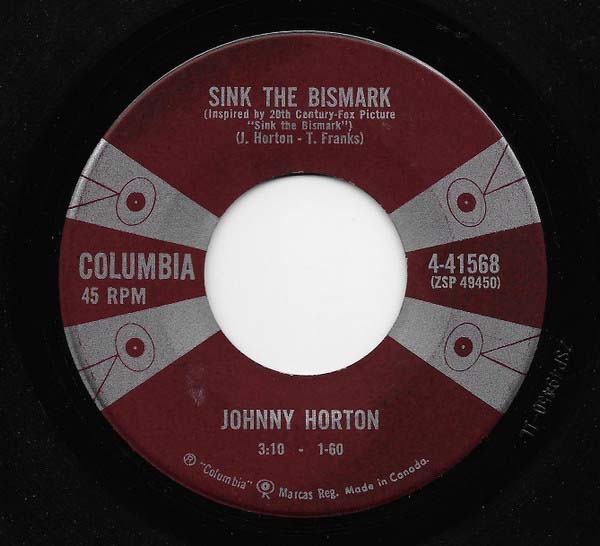
Mettler: Wow, how about that! Do you still have it?
Lifeson: Oh, no! That was like 1960, or ’61. Yeah, that was a long time ago! (chuckles) [“Sink the Bismarck” was released as a single in 1960, on Columbia]
Mettler: Isn’t that something? Was it like — did you feel empowered that, as a person growing up playing and listening to music, it was a special experience where you had to get this object and then play it, experience it, and interact with it? Was that a special thing for you?
Lifeson: Oh, for sure. I felt so grown up to go into a record store and buy a record with my own money that I saved up cutting lawns.
Mettler: That’s exactly what I did! I did the same thing as a kid — cutting lawns to make money to buy records. What was the shop that you went to? Do you remember the name of that place?
Lifeson: Yeah. (slight pause) I think it was called Vistels Music. And my parents actually bought me a guitar for Christmas from that same store. That’s when record stores and bookstores also carried guitars in the back — like a $59 guitar.
Mettler: Where was that shop located? Was that in Toronto?
Lifeson: In Willowdale, north of Toronto. They’re long, long, long gone.
Mettler: Probably, yeah. [MM notes: Apologies if I have that shop name/spelling wrong there!] I used to love going to Sam the Record Man anytime I was on Yonge Street in Toronto. Such a great shop. And I didn’t even realize how close it was to Massey Hall until years later. I know Rush recorded All the World’s a Stage at Massey Hall in 1976 [their first double live LP, on Mercury], and I was just there a few months ago for a special event for The Tragically Hip.
Lifeson: Oh, the renovation they did there is spectacular. Did you see the windows?
Mettler: Yes! They’re beautiful.
Lifeson: Those windows were sealed, with concrete, since the 1930s! There were complaints at the time — noise complaints — so they sealed the windows, and then, when they rediscovered them — they’re beautiful stained glass windows! — they refurbished them. When the light comes in — wow, yeah. (smiles) We [Alex, and his Rush bandmate Geddy Lee] were there to do a thing with The Hip a few years ago. It was in the afternoon, in the summer. The light was streaming in those windows — and there was all this color on the stage. Yeah, it’s beautiful, what they’ve done in there.
Mettler: It really is something, I agree. Would you think about playing there again, now that it’s back? I think that would be a great venue for you guys — for Envy of None, I mean.
Lifeson: Yeah, we kind of looked into it. We spoke to our agent, and looked at some numbers. I think when the record comes out and if it does well, then we can afford to do something like that. If there’s some way we could get enough people interested to come out, then we would definitely consider it, because I think playing both albums, as a night of music, would be spectacular.
Mettler: Well, you’ve got at least one ticket pre-sold already, maybe even two, so I think that’s a good start. (chuckles)
Lifeson: That’s a start, yeah! (laughs)
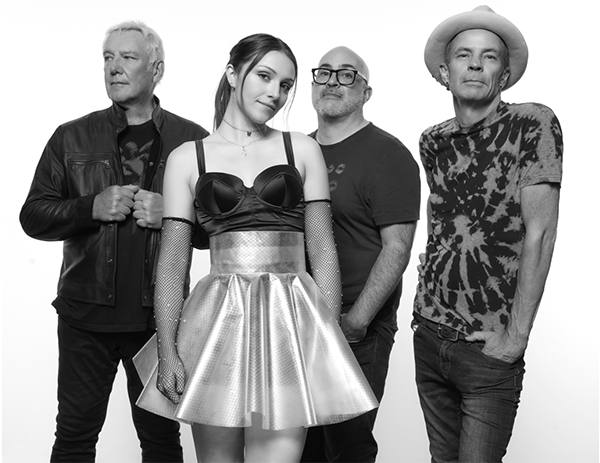
Mettler: To wrap things up, what I like to do with all the folks I talk to is, I’m gonna put us 50 years into the future, so we’re in 2075 — and, as I like to say, unless there’s some weird science going on, you and I may not physically be on the planet at that point, although I dunno; maybe! (both chuckle) But when whoever’s listening to music 50 years from now types in “Alex Lifeson,” “Victor,” “Envy of None,” or that other band “Rush” into their listening device, what kind of listening experience would you want a future listener to get from the music you’ve made?
Lifeson: Umm, probably — that’s a tough question to answer. But I would say, probably it’s the variety of content. You know, Rush had a long career. We had a lot of records, a lot of different music in Rush. You mentioned the ’80s, and the song “Manhattan Project” [from 1985’s Power Windows, on Mercury] — that’s very different from the ’70s and, again, different from the ’90s, that period. There’s a lot of really interesting stuff that that outfit did over those years.
Victor, because it’s a solo record, I tried to infuse a lot of variety in that record as well — and then it comes to Envy of None, which is very different from any of that stuff. And within Envy of None, there’s different stuff. Even with guitar. I play a lot of acoustic guitar now, and I’m playing so many different tunings. It’s a discovery, and a path forward — and it’s progressive. It keeps you working, and thinking, and moving. And that’s what it’s all about.
So, I think that’s the kind of mark I would love to leave and have rediscovered — the fact that I was never stuck in one particular genre, that I liked to expand, and I liked to play very, very different things.

ENVY OF NONE
STIJ(Ē)ƏN WĀVS
1LP (Kscope)
Side A
1. Not Dead Yet
2. The Story
3. Under The Stars
4. Thrill Of The Chase
5. Handle With Care

Side B
1. That Was Then
2. Raindrops
3. New Trip
4. Clouds
5. The End
6. Stij(ē)ən Wāvs
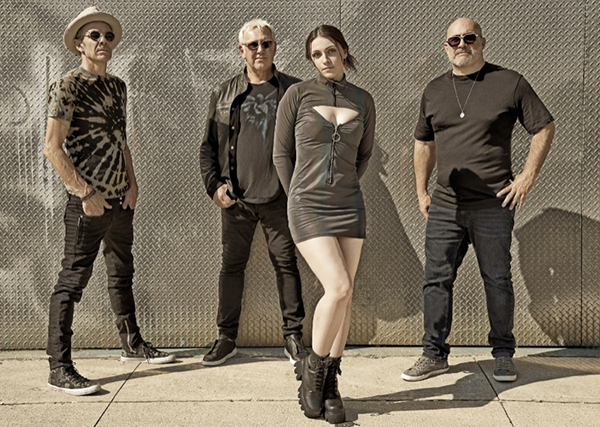
- Log in or register to post comments

